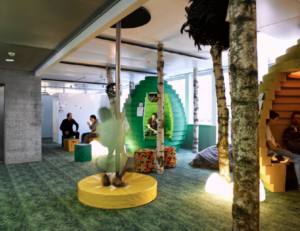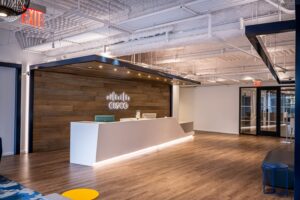As work evolves, it’s crucial to understand the new paradigms shaping our workplaces. Welcome to our Unworking Weekly mini-series, inspired by the new book “Unworking: The Reinvention of the Modern Office” By Philip Ross & Jeremy Myerson. Over the next twelve weeks, we will explore the themes of each chapter, offering insights into the book’s vision for the future of work and the workplace. The pandemic triggered a reevaluation of the office’s role, promoting a shift away from outdated practices that have defined offices for the past century, influencing everything from city architecture to daily routines.
Each chapter of Unworking explores different aspects of this change. Our series begins with Chapter 1: Efficiency, exploring the transformation of the office environment from the 19th century to the modern era, highlighting the drastic changes brought about by efficiency-driven designs and management principles.
Efficiency, in the context of work and workplace, refers to the optimisation of every aspect of the work environment and process to maximise productivity and minimise waste.
This includes the design of office spaces, the arrangement of furniture, the implementation of technology, and the management of employee’s time. It aims to streamline operations and increase output but often involves a trade-off with employee autonomy, comfort, and well-being. Post-pandemic, there has been a growing emphasis on balancing efficiency with flexibility, human-centered design, and overall workplace effectiveness to foster a more sustainable and satisfying work environment.
Balancing Efficiency and Well-Being
Organisations push for efficiency has often come at the cost of employee well-being. Studies show that highly efficient but strict work environments can lead to increased stress and decreased job satisfaction. A study by Harvard Business Review found that rigid, efficiency-driven work models often result in employee burnout and disengagement. Post-pandemic, companies are rethinking their strategies, aiming to create flexible and supportive workplaces that balance productivity with employee health and happiness. This shift includes adopting hybrid work models that offer greater autonomy and flexibility, addressing the need for a more human-centered approach to workplace design.
- 36% of employees are highly satisfied with their job. Society for Human Resource Management (SHRM) 2021
- Approx $300 billion per year in absenteeism, turnover, and reduced productivity. The American Institute of Stress 2020
The Rise of Flexible Workplaces
Modern office designs are shifting towards flexibility to accommodate different work styles and activities. Activity-based workplaces, co-working, and remote work options are becoming more popular. This flexibility not only improves employee efficiency but also supports employee well-being by offering a variety of work settings to suit different tasks and preferences.
Google’s EMEA Engineering Hub in Switzerland is an excellent example of successful innovative office design. The key element of this office design was the approach that Google employees participated in the design process to create their own local identity that specifically accommodates their needs. The surveys found that employees preferred to decrease their personal work areas to achieve more communal and meeting spaces in the office.
The Evolution Design firm designed the working areas with a high degree of space efficiency. As well as the standard meeting rooms at the office, there are also many informal meeting areas, which have a more relaxed atmosphere for teams to have a creative discussion. The communal areas are purposely designed dispersed throughout the building to encourage employees to circulate throughout the seven floors to enhance communication between the different working groups and teams.

Google Offices Zurich 2018.
Embracing Human-Centered Design
Human-centered design is a holistic approach that emphasises empathy, iteration, and collaboration throughout the design process. By prioritising user experience and usability, human-centered design aims to create products that are intuitive, accessible, and inclusive. It fosters greater innovation and creativity through experimentation and iteration, leading to better solutions. Long-term sustainability is also achieved by aligning products and services with human values, which strengthens workplace relationships and builds long-term employee satisfaction.
Cisco’s Penn 1 Office in New York exemplifies this human-centric approach. The office features flexible workspaces, ergonomic furniture, and advanced collaborative technologies that cater to the diverse needs of its employees. The design includes natural light, quiet zones for focused work, and communal areas to foster social interaction, reflecting a deep understanding of employee well-being and productivity. By integrating these features, Cisco not only enhances the employee experience but also drives engagement and innovation, showcasing the true potential of human-centered design.

Cisco’s Penn 1 Office in New York.
This discussion highlights the intricate balance between efficiency and well-being in contemporary workplaces. As organisations prioritise productivity, they are increasingly confronted with the challenge of maintaining employee satisfaction and health. From the prevalence of burnout to successful examples of flexible and human-centered workplace designs at companies like Google and Cisco, it’s evident that a paradigm shift is underway.
Readers can dive deeper and learn more about the implications of efficiency-driven designs and management principles in Philip Ross and Jeremy Myersons’ latest book, Unworking: The Reinvention of the Modern Office . By understanding these dynamics, we can navigate the evolving world of work, with a renewed emphasis on curating sustainable, fulfilling, and effective work environments.
Grab your copy of Unworking from Amazon here.
